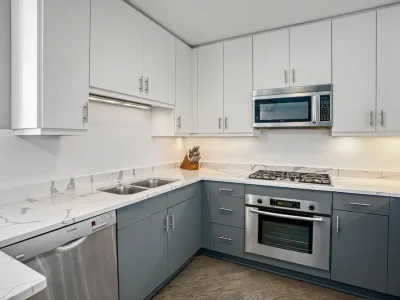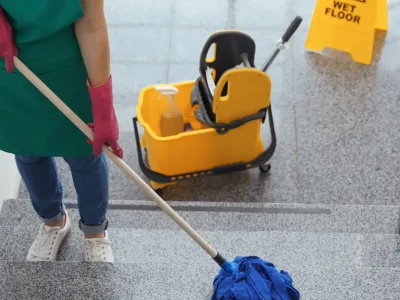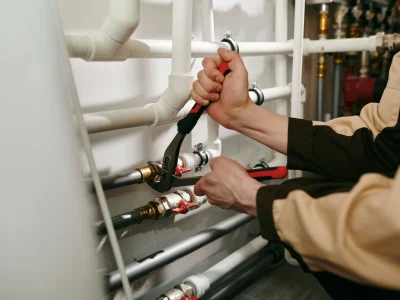When a home or office runs smoothly, the routines behind the scenes often go unnoticed—until they don’t. In Geneva, thoughtful cleaning strategies are becoming central to how residents and businesses maintain healthier, more efficient spaces. From eco-friendly formulas to allergen-removal protocols, local teams are shifting toward practices that are both performance-driven and climate-aware. If you’re weighing your options, consider how modern services are now built around data, transparency, and easy-to-understand results. To compare plans or explore availability, Check Now and see which approach best fits your space and schedule.
Geneva’s Growing Shift Toward Sustainable Cleaning Practices
Sustainability in cleaning used to be a nice-to-have; now it’s a core expectation for many property owners and facility managers in the Fox River Valley. In Geneva, teams are increasingly integrating low-toxicity concentrates, reusable microfiber systems, and smart dosing tools that reduce waste without compromising cleanliness. This transition is driven by a mix of community values, practical cost savings, and improved health outcomes tied to reduced chemical exposure. You’ll also find a growing preference for transparent ingredient lists and supplier accountability, aligning with broader environmental commitments that Geneva residents care about. For anyone evaluating options, hiring a Geneva IL Cleaning Service that discloses product data and process metrics can make it easier to compare vendors on more than just price.
What’s powering the shift
- Demand for safer indoor environments that cut down on irritants and volatile compounds.
- Business interest in lowering long-term supply costs via concentrates, reusable materials, and waste reduction.
- Tenant and customer preferences for eco-labels backed by third-party certifications.
- Local awareness of water and energy conservation benefits tied to efficient equipment.
- The measurable productivity gains of healthier workplace environments and fewer sick days.
As service providers refine their operations, the focus goes beyond swapping chemicals to redesigning the *entire* workflow. That includes optimizing staff training, timing tasks to reduce disruption, and aligning tools with specific surfaces to prolong their lifespan. The result is a more consistent, high-quality clean achieved with fewer inputs and less risk to indoor air quality. In practice, that might look like precision-trigger sprayers that cut aerosolized droplets, color-coded microfiber to prevent cross-contamination, and pH-matched products that clean thoroughly without unnecessary abrasion. If you’re unsure where to start, Check Now for providers that outline cleaning routes, document product dwell times, and share post-clean verifications.
This mindset delivers visible results: fewer residues, better air, and longer-lasting finishes on floors and fixtures. It also lowers the total cost of ownership for building materials by preventing damage from overuse of harsh agents. Residents appreciate the quiet confidence that comes from systematic, low-impact routines, while businesses value measurable improvements in employee comfort and brand perception. With more teams adopting certified products and efficient tools, Geneva’s cleaning landscape is moving toward performance that’s both rigorous and responsible. Choosing a Geneva IL Cleaning Service with sustainability baked into its operations helps ensure that healthier spaces aren’t just a trend—they’re standard practice.
Allergen-Reduction Techniques Improving Indoor Air Quality
Geneva’s seasonal shifts bring pollen surges, tracked-in debris, and fluctuating humidity, all of which can irritate sensitive occupants. Modern cleaning programs are responding with targeted, science-backed allergen controls that remove particulates, reduce microbial reservoirs, and manage moisture risks. The emphasis is on frequent, low-disturbance removal rather than spreading dust around or forcing it deeper into fabrics. You’ll see professional teams prioritize HEPA-level capture, controlled vacuuming approaches, and microfiber systems designed to lock in dust instead of recirculating it. These strategies can be especially impactful in homes with kids or pets, and in offices where hybrid schedules mean deeper cleans can be timed for off-hours.
Key allergen-control tactics
- HEPA vacuuming (or better) with sealed systems and proper filter maintenance.
- Damp dusting and flat microfiber mops to capture, not redistribute, particulate matter.
- MERV 11–13 filter upgrades in HVAC systems, paired with regular change schedules.
- Hot water extraction or low-moisture carpet care to remove dust mites and pollen without over-wetting.
- Targeted disinfection of high-touch points using non-irritating, residue-minimizing products.
A strong allergen-reduction plan is as much about cadence as it is about products. Weekly or biweekly routines minimize dust loads, while monthly or quarterly deep services focus on fabrics, vents, and hard-to-reach ledges. Advanced teams sometimes incorporate indoor quality checks—think PM2.5 readings, humidity monitoring, or spot testing on carpets—to tailor the strategy over time. For offices, the payoff includes fewer complaints about “stuffy” rooms and better comfort during high-pollen periods. Working with a Geneva IL Cleaning Service that documents processes and shows measurable results helps you vet claims and keep improvements on track.
Homeowners and property managers can further support allergen control with small, consistent habits. Placing walk-off mats at entries, scheduling filter changes, and keeping clutter in check all boost the effectiveness of professional cleaning. For families balancing school and extracurricular schedules, outsourcing heavier tasks like upholstery care or vent cleaning ensures nothing crucial gets overlooked. In busy workplaces, rotating deep cleans around team calendars reduces interruptions while keeping allergen loads low. If indoor comfort is a priority this year, Check Now to explore providers that pair daily maintenance with data-informed deep cleaning.
Eco-Friendly Agents Offering Deep Cleans Without Harsh Chemicals
Green cleaning isn’t a compromise anymore; it’s a suite of high-performance solutions that remove soils while minimizing toxicity and residues. Many of today’s eco-friendly agents combine plant-based surfactants, enzyme blends, and safer solvents that break down grime at the molecular level. Paired with proper dwell time and agitation, these products can tackle kitchens, restrooms, and high-traffic floors without the harsh fumes or irritation associated with older formulas. Concentrated products reduce packaging waste and shipping emissions, while calibrated dilution systems ensure consistent results. The upshot is a clean that feels fresh, not chemical-laden—ideal for homes, clinics, and offices where occupants return shortly after service.
How to evaluate an eco-friendly product
- Look for third-party certifications like EPA Safer Choice, Green Seal, or Ecologo.
- Review the Safety Data Sheet (SDS) for hazard statements, pH, and compatibility.
- Match the product’s soil profile (organic, mineral, protein-based) to the task at hand.
- Verify recommended dwell times; performance depends on contact, not just application.
- Confirm fragrance policies, especially in scent-sensitive or clinical environments.
When implemented correctly, eco-friendly agents outperform traditional chemicals in many real-world scenarios. Enzyme-based formulas excel at breaking down food, pet stains, and restroom soils, while neutral pH cleaners protect stone and sealed surfaces. In commercial spaces, precise dilution with cold water further reduces energy use without sacrificing efficacy. A Geneva IL Cleaning Service that trains staff on product pairing—like acidic cleaners for mineral deposits and alkaline for grease—will achieve deep results with fewer passes. That attention to chemistry translates into faster dry times, less residue, and surfaces that stay cleaner longer.
It’s worth addressing a persistent myth: greener products are not inherently weaker. Performance hinges on pairing the right agent with appropriate tools—microfiber, soft-bristle brushes, or oscillating pads—and giving the chemistry time to work. Professionals also standardize spray patterns, dwell windows, and rinse techniques so each step builds on the last. If you’re wary of strong scents or residues, ask for fragrance-free options and confirm rinse protocols on food-contact surfaces. For peace of mind and clear comparisons across product lines, Check Now for teams that publish their chemical inventories and explain why each item is used.
Personalized Maintenance Plans for Residential and Office Clients
No two spaces face identical demands, even when they share a floor plan. Personalized maintenance plans consider traffic patterns, surface materials, occupancy schedules, and any specific sensitivities like asthma or chemical allergies. By taking an inventory of what gets dirty fastest—and why—teams can prioritize tasks that prevent buildup and protect finishes. This reduces emergency calls, improves the look and feel of rooms between visits, and extends the lifespan of flooring, grout, and furniture. Ultimately, customization saves time and budget while delivering cleaner, safer environments.
Elements of a tailored plan
- Zone mapping: Identify high-, medium-, and low-traffic areas for targeted frequency.
- Cadence: Combine routine touch-ups with rotating deep tasks for lasting results.
- Scope: Define what’s included every visit versus monthly or quarterly.
- Staffing and tools: Match experience, equipment, and access needs to the site.
- Quality checks: Document before/after photos, ATP or particulate spot testing, and client sign-offs.
- Communication: Keep notes on sensitivities, special requests, and seasonal shifts.
Residential and office plans differ in subtle but important ways. Home programs often balance kitchen and bath sanitation with fabric care, kid- and pet-friendly protocols, and flexible timing. Offices emphasize restrooms, touchpoints, break rooms, and floor care that supports brand image and safety. The best providers adapt around meetings or naps, client visits, and deliveries, maintaining a professional presence with minimal disruption. Choosing a Geneva IL Cleaning Service that offers transparent scopes and predictable scheduling makes it easier to maintain standards across changing routines.
Onboarding sets the tone for success. A thorough walk-through, surface inventory, and discussion of sensitivities ensures the plan fits the space from day one. Digital portals or shared checklists keep everyone aligned on what was completed and what’s next, with photos and notes for accountability. Seasonal updates—like salt mitigation in winter or pollen-management strategies in spring—keep results consistent as conditions change. If you’re ready to match service to your actual needs rather than a one-size template, Check Now and compare providers on their assessment depth and communication practices.
Waste-Reduction Initiatives Supporting 2025 Environmental Goals
Waste reduction is no longer a side project; it’s central to how cleaning operations in Geneva deliver value. By 2025, many local teams aim to cut disposal volumes and emissions through smarter purchasing, reusable systems, and closed-loop supply chains. That means fewer single-use plastics, better route planning, and careful dosing that avoids over-application. When waste shrinks, costs and carbon impacts drop in tandem, all while cleaning outcomes remain strong—or even improve. Clients benefit from leaner operations that align with community sustainability targets and, in many cases, bolster green building certifications.
Practical waste-cutting moves
- Switch to concentrates with calibrated dilution systems and refillable bottles.
- Adopt high-durability microfiber cloths and mops with tracked lifecycles.
- Install in-house refill stations to eliminate routine single-use container purchases.
- Separate compostable waste where applicable and expand recycling beyond the basics.
- Coordinate e-waste and battery collection alongside regular custodial schedules.
- Use durable, color-coded containers to reduce liner use and cross-contamination.
Measuring progress keeps programs honest and effective. Providers can track supply-to-output ratios, diversion rates, and cost per cleanable square foot to understand what’s working. Some clients request quarterly dashboards that map usage, waste streams, and greenhouse gas estimates against targets. These insights support LEED, WELL, and ESG reporting, and they help teams fine-tune routines for even better results. When a Geneva IL Cleaning Service reports transparent metrics, clients can see the direct link between smarter processes and tangible environmental gains.
The benefits extend beyond the balance sheet. Cleaner material streams reduce contamination in recycling, and sturdy, reusable tools make job sites safer and more efficient. The community sees reduced curbside volume, fewer chemical residues entering waterways, and healthier indoor environments as gentler products and accurate dosing become standard. If you want your maintenance plan to reflect where Geneva is headed—efficient, resilient, and accountable—Check Now for providers that pair waste audits with actionable roadmaps. Partnering with teams that prioritize sustainability today sets up homes and workplaces for stronger environmental performance throughout 2025 and beyond.














Comments